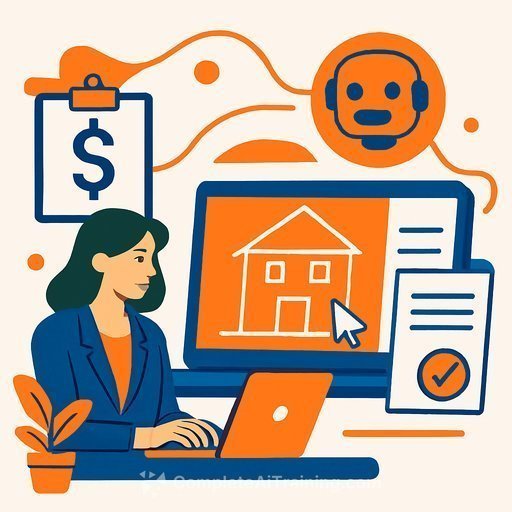Can Opendoor 2.0 Redefine iBuying Through AI and Automation?
Opendoor Technologies (OPEN) is rebuilding its operating model around software and automation. Under new CEO Kaz Nejatian, the company is moving away from consultant-heavy workflows that slowed acquisition volume and squeezed margins in early 2025.
The new pitch: run iBuying like an e-commerce engine. That means compressing decision time, standardizing inputs, and letting machines do most of the work while people handle exceptions.
What's Actually Changed
Opendoor has rolled out more than a dozen AI-driven tools in weeks, not quarters. The suite includes end-to-end AI home scoping, automated title and escrow, multilingual valuation agents, and a revamped inspection system that feeds standardized video and audio into machine-learning models.
Impact so far: home assessments are down from nearly a full day to about 10 minutes. Underwriting flows that once needed as many as 11 people now require one.
Early Results
Weekly acquisition contracts nearly doubled from mid-September to late October. That volume feeds the flywheel: more inventory, more buyers, better conversion.
Management's path to sustainable unit economics hinges on speed, tighter pricing spreads, and faster resale turns. The target: adjusted net income breakeven by the end of 2026.
Why This Matters for Operators and Builders
- Throughput beats intuition: standardized capture (video, audio, structured data) shrinks variance and cycle time.
- Automate the middle: title, escrow, scoping, and underwriting are prime for rules + AI agents.
- Staff for exceptions: move teams from "do the work" to "audit the work," with clear escalation paths.
- Measure the full loop: from offer-to-close days, hold costs, and renovation turn time to resale velocity and spread discipline.
Competitive Context
The most direct comparison is Offerpad (OPAD), which shares the same instant buy/resell model. Watch turn-time compression, pricing discipline, and inventory risk management as the scoreboard for both firms.
LGI Homes (LGIH) isn't an iBuyer, but its tech-enabled build-to-close machine is relevant. It pressures Opendoor to take automation deeper into renovations and resale logistics, not just acquisition and underwriting.
Key Risks to Watch
- Macro housing softness could dampen resale velocity and force wider spreads.
- Legacy low-quality inventory may weigh on near-term margins.
- Scaling new workflows at pace brings model drift, QA, and exception-handling challenges.
Stock, Valuation, and Estimates
OPEN shares are up 889% over the past six months, while the broader industry fell 3.8%. On valuation, OPEN trades at a forward P/S of 1.42 versus the industry average of 4.68x.
The Zacks Consensus Estimate for 2025 loss per share widened to $0.25 over the past 30 days, though that still narrows from last year's $0.37 loss. OPEN currently carries a Zacks Rank #4 (Sell).
Operator Scorecard: Metrics That Matter
- Offer-to-inspection time and assessment duration (target minutes, not hours)
- Underwriting headcount per file and percent automated
- Acquisition contracts per week and contract-to-close conversion
- Average spread at acquisition and realized gross margin per home
- Renovation turn time, total hold days, and resale velocity
- Unit-level SG&A and variance between estimated vs. actual scope costs
Practical Moves for Real Estate and Construction Teams
- Standardize data capture: mandate walk-through video, ambient audio notes, and labeled defect photos.
- Codify scopes: build a parts-and-labor library with ML-based price guidance; audit exceptions weekly.
- Automate the paperwork: API-first title and escrow; auto-generate disclosures from inspection artifacts.
- Deploy AI valuation agents as a front line; route edge cases to senior analysts.
- Close the loop: compare pre-acquisition models with post-renovation outcomes to retrain pricing and scope models.
Bottom Line
Opendoor is trying to turn iBuying into a software workflow with humans in the loop. If execution holds-faster assessments, lean underwriting, tighter spreads, and quicker resales-the economics can improve.
The burden is on scalability and quality control. For operators across real estate and construction, the takeaway is clear: make standardized capture, automation, and exception-first staffing your default.
If your team is standing up similar automation, focused training helps. See practical options for AI process automation here: AI Automation Resources.
Your membership also unlocks:






